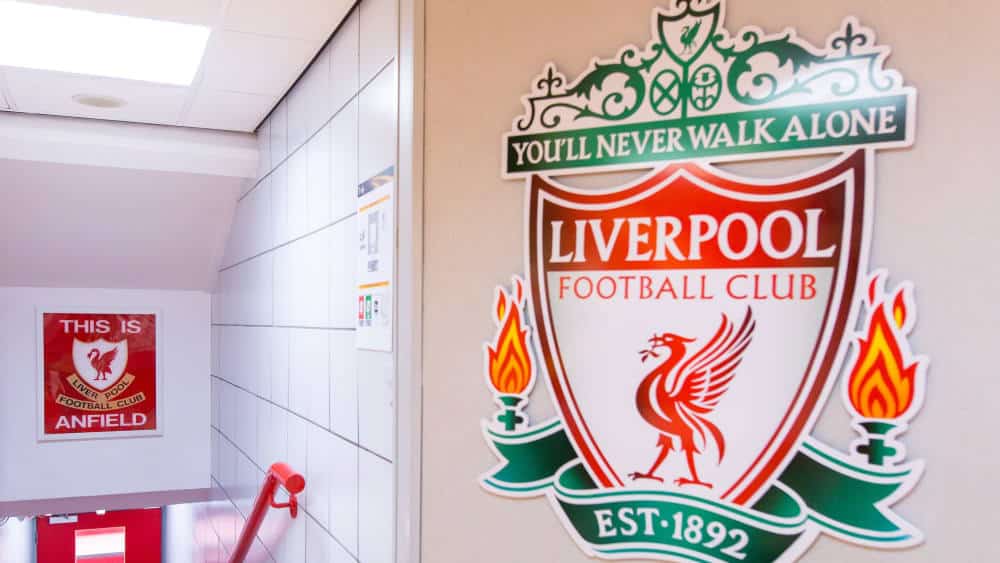Fewish crests are as multifaceted as that of Liverpool FC. What the goals, the torches and the bird mean – and why Everton FC could have laid claim to it
Can you touch it or not? Even some of the visiting players in the Anfield dressing room stretch out their hands to touch the Liverpool sign with the words “This is Anfield” on it. For decades, players have seen it as a sign of reverence to come into contact with the Liverpool legend.
However, especially as a Liverpool player, you should actually be careful with this. At least that’s what Jürgen Klopp thinks: “The prerequisite for this is that you have also contributed something to the showcase at the Reds,” he once said.
Thiago, who moved to Liverpool from FC Bayern in the summer of 2020, was receptive: “You first have to earn it to touch the symbol,” said the midfielder at his presentation. “That’s why I’m not touching the sign today, I have respect for this tradition.”
Incidentally, the sign was not originally supposed to say “This is Anfield”. But “Welcome to Anfield” was a little too friendly for coaching legend Bill Shankly. “You don’t come here to have a good time and a nice day,” he is said to have said. They don’t want to hand out presents in Liverpool, and they don’t want to give the impression that they are doing so.
The “Shankly Gates” and the torches of remembrance
An older version of the Liverpool coat of arms can be seen above the lettering, and Shankly has also been immortalized in some way on the newer one. In the form of the so-called “Shankly Gates”, which are enthroned above everything. His widow Ness opened the gates on August 26, 1982, which no longer stand next to the Hillsborough memorial but have been moved to the other side of the site.
Beneath the ornate ironwork are the words “You’ll Never Walk Alone”. It is the club’s motto and comes from the song of the same name by Gerry & the Pacemakers. After Hillsborough, the motto was also integrated into the crest.
Another detail commemorates the 97 Liverpool fans who lost their lives on April 15, 1989 or in the aftermath of the stadium disaster in Sheffield: Torches can be seen to the left and right of the crest, commemorating the tragedy and its victims. The year of foundation, 1892, is integrated into a banderole at the bottom
The story behind the Liver Bird
The most striking feature is a mythical creature that fills the center of the coat of arms and holds a sprig of purple kelp in its beak. But it is not a dragon, as many people think. Instead, the so-called Liver Bird is a cross between an eagle and a cormorant and has been a symbol of the city for over 800 years. It is thought to have originated in 1207, when King John received a royal charter to register Liverpool as a city. The monarch needed a unique seal to distinguish documents and sterling from his territory. The Liver Bird was born
However, it is not only to be seen on the Reds’ coat of arms. In total, there are over 100 Liver Birds in the city on the Mersey, for example on the historic lampposts in the city center. The most magnificent depictions can be found on the two towers of the Royal Liver Building at Pier Head.
It was Everton FC’s turn
Although everyone now associates the Liver Bird with Liverpool FC, the city rivals were actually quicker. Everton FC used the Liver Bird on its championship medals from 1891, a year before Liverpool FC was founded. It could also be seen on later medals of honor of the “Toffees”.
In the late 1930s, Theo Kelly designed an official club crest. He decided against the Liver Bird and opted for a symbol that was more closely associated with the Everton district. The “Everton Lock up” or “Prince Rupert’s Tower” has been an integral part of the club crest ever since.





